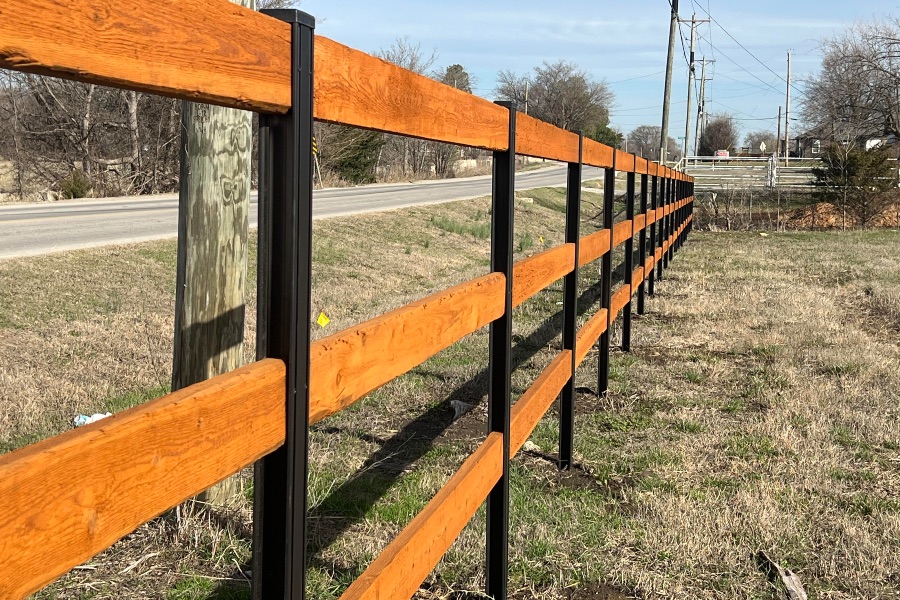All Categories
Featured

A fence acts as more than simply a limit; it offers privacy, safety and security, and improves the curb appeal of your residential or commercial property. Like any outside framework, a fencing will inevitably deal with wear and tear from the elements and age. While regular upkeep can extend the life of your fencing, there comes a time when fixings no more are adequate, and it's time to take into consideration substitute. So, exactly how do you understand when your fencing is beyond conserving? Below are some crucial indications that your fence may need to be changed.
- Noticeable Damage or Put On. Among one of the most apparent indications that your fence is nearing the end of its lifespan is visible damage. This could consist of fractures, divides, warping, or damaged sections. Wooden fencings are specifically vulnerable to splitting or splintering gradually, while plastic fencings can establish splits. Metal fences, like chain-link or wrought iron, can also come to be damaged through rust or curved articles. If the damages is structural or extensive, fixing specific areas might not suffice, and replacing the fence comes to be required.
- Rot and Degeneration. Wooden fences are particularly susceptible to rot, specifically in areas with high humidity or frequent rains. It can lead to decay when moisture gets caught in the timber. If you discover that parts of your fencing really feel soft to the touch or if you see mold or fungus expanding, it signifies rot. Although small rot can in some cases be repaired, extensive degeneration, particularly near the base of fence messages, can jeopardize the honesty of the entire fencing. In such situations, substitute is typically the very best alternative.
- Leaning or Tilting. A leaning fence is a clear sign that something is incorrect with its architectural support. Gradually, articles may change because of soil disintegration, water damage, or perhaps root growth from nearby plants. While minor tilting can in some cases be remedied by correcting the alignment of the articles and securing them, comprehensive leaning frequently suggests that the posts have been damaged beyond repair work. If the fencing remains to lean regardless of efforts at correction, it might be time to replace the damaged sections or the entire fencing.
- Corrosion or Rust (For Steel Fences) Particularly one made of wrought iron or corrosion, rust or steel can damage its structure if you have a metal fence. While small corrosion can typically be eliminated and dealt with, considerable corrosion that endangers the fencing's stability is an indication that substitute is required. It can make the fence unsightly or unsafe if the corrosion has spread out considerably or compromised the metal. It's better to replace a greatly corroded steel fencing than to continue attempting fixings.
- Parasite Infestations. Wooden fences are an usual target for insects like termites, carpenter ants, and rodents. These insects can trigger comprehensive damage by tunneling right into the wood and damaging its structure. If you notice tiny openings, sawdust heaps, or real bugs living in your fencing, it's vital to resolve the problem as soon as possible. In cases where the damages is serious, the damaged fencing messages or boards might require to be replaced to recover the fencing's stability.
- Problem Preserving the Fence. If you find on your own constantly making repair services to the very same locations of your fence, it can be a sign that the fence is past its prime. If you're spending more cash on covering up old areas than you would on a full replacement, it's time to consider replacing the fencing entirely.
- Age of the Fencing. The age of your fence plays a significant role in its general condition. While the life expectancy of a fencing can vary depending upon the material, weather, and location conditions, the majority of fencings last between 15 and 20 years. If your fence is approaching or exceeding its anticipated life expectancy and showing indicators of wear and tear, it may be time to replace it. Despite regular upkeep, an aging fence will eventually need to be replaced to maintain its performance and look.
- Outdated Look. Sometimes, a fencing simply comes to be outdated, no longer matching the style or demands of your residential property. If your fence no much longer matches your home or satisfies your needs-- such as personal privacy, security, or aesthetics-- it might be time to consider a replacement.
- Fencing No More Serves Its Purpose. Your needs for a fence can develop over time. In such cases, replacing the fencing with one that meets your current requirements is the ideal option.

Verdict. A fence is an integral part of your home's outside, providing safety, style, and privacy. Nevertheless, like any type of framework, it will eventually reveal indicators of aging or damages. If you discover any of the indicators listed above-- visible damages, rot, leaning, pest infestations, or an out-of-date appearance-- it may be time to replace your fencing. Changing an old, worn-out fencing can improve the general value of your property, boost safety, and offer your yard a fresh look. By watching out for these indicators, you can make an enlightened decision concerning when it's time to purchase a brand-new fence.
Latest Posts
Check Out Outstanding Car Repair Care from Montclare Auto Repair – Keep Your Car Running Smoothly
Published May 24, 25
1 min read
Discover the Best Auto Repair Coupons in Montclare, Chicago
Published May 23, 25
1 min read
Discover WyHy FCU – The Key to Superior Financial Services in Wyoming
Published May 22, 25
1 min read
More
Latest Posts
Check Out Outstanding Car Repair Care from Montclare Auto Repair – Keep Your Car Running Smoothly
Published May 24, 25
1 min read
Discover the Best Auto Repair Coupons in Montclare, Chicago
Published May 23, 25
1 min read
Discover WyHy FCU – The Key to Superior Financial Services in Wyoming
Published May 22, 25
1 min read